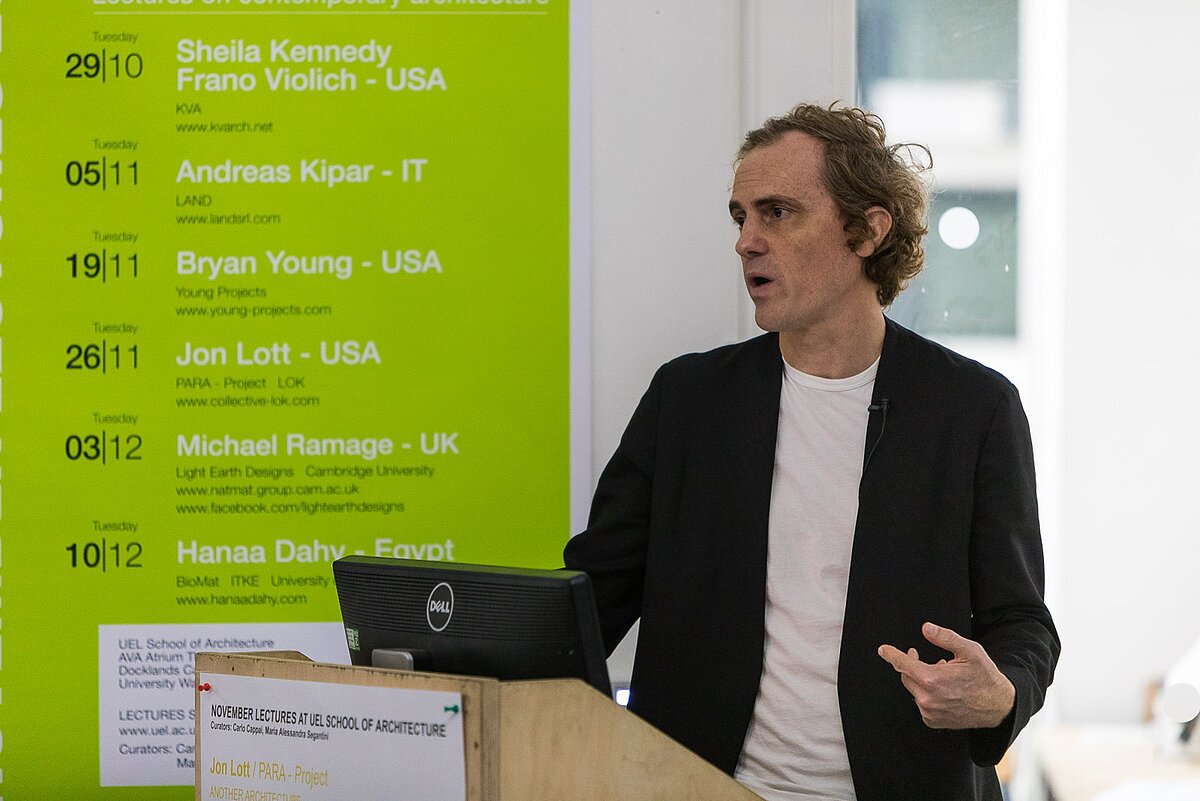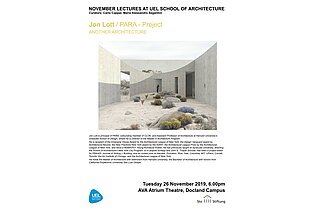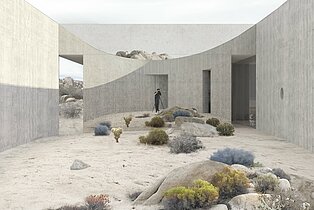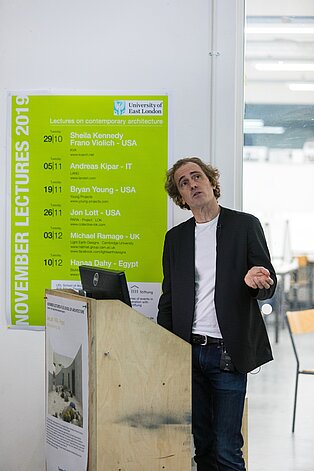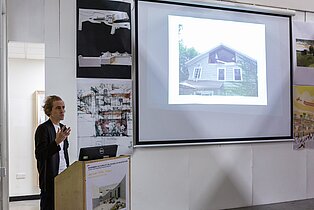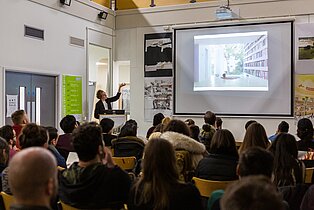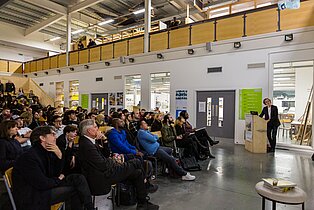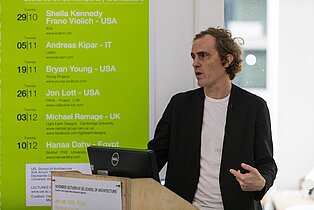Review | Jon Lott in London
The fourth November Lecture at the UEL School of Architecture was delivered by Jon Lott, principal at PARA Project, cofounding member of Collective-LOK (CLOK), and Assistant Professor of Architecture at Harvard University’s Graduate School of Design, where he directs the Masters in Architecture programme. Lott is recipient of the Design Vanguard award by Architectural Record, the New Practices New York award by the American Institute of Architects, the Architectural League Prize by the Architectural League of New York. His work has been published in the New York Times, LA Times, New York Magazine, Harvard Design Magazine, Architectural Record, Metropolis, amongst others.
The lecture focused on a range of cultural and private residential projects, drawing out the reoccurring themes and conceptual threads that run through them. The first was Haffenden House, a poets’ studio connecting to an existing suburban residence in Syracuse via an imperceptible bridge element. Lott described the light-filled volume, that provides an interior library, reading room, and writing studio, contained within a silicone fibreglass wrapper with pixelated openings, featuring a sunken bathtub, fragmented mirrors and rounded interior walls and ceilings.
He moved on to present a competition the practice won for the renovation of the Huntington Hall Commons entrance at Syracuse University. This project centred on the removal of a part of the building, which was originally a hospital. Lott explained the themes of context, originality and purpose that informed the design, allowing the erasure of this space to be effective. A gradually inclined ramp now shapes the approach to a horizontal transparent frontage.
Lott moved onto a competition win by CLOK for the Van Alen Institute in New York, and explained bringing the organisation from the 6th to the ground floor, and connected it with the urban realm. Using mobile screens, plus projectors, lighting, and acoustic cones, Lott explained how the space could be finely curated for dinner parties, lectures, exhibitions and launches. He explained how a reflective screen on a trailer was designed to flank the institute entrance, extending the organisation’s interior, and mission, to the public exterior.
Lott moved on to a project for art and architecture organisation Storefront in New York. Playing with notions of curiosity in architecture, he explained designing blank hoardings to go up around the original Storefront frontage, with small cut outs to give purposefully distorted glimpses inside. The hoardings also create additional exhibition space, again paying with notions of interiority and exteriority, and extending the space into the public realm. Lott explained the points at which the new and the original storefront concept collapse into each other.
Lott went on to present Bob’s House, a project building around the house of an art collector to increase space for hanging art, without disrupting the home. Lott described the resulting concept, building a house for a house, in which the practice turned the roof of the original into an object of art. Lott linked this to extending the Moran Moran Gallery in Los Angeles. In this project the practice designed a roof for a roof, building an exoskeleton above the original roof, attaching new trusses, and removing those below, increasing the gallery volume and making an exhibit of the newly redundant roof, developing the idea of architecture in a self-referential context.
For the project Roche/Dinkeloo Double, a temporary installation for the University Museum of Contemporary Art at University of Massachusetts Amherst, Lott explained the theory behind the two-sided wooden frame, which converges the heroic proportions and presence of the brutalist intervention it adjoins, with notions of domesticity.
Lott moved on to present Pioneertown House, in which the practice embedded an original 400sq ft. homestead into a new house, as part of an art studio and residence out in the Californian desert. Lott explained how the project plays with notions of positive and negative space, interiority and exteriority, the timeline or originality, and how the collection of buildings relates fragments of LA life to the surrounding desert boulders.
Lott closed with Stump House, situated in the Santa Cruz Mountains, California. Lott explained how, working within strict building limitations, the house has an artist’s studio embedded in the side of the mountain, with a temple-like structure above it, with a glazed cut-out in the roof revealing the tree canopy above, offering an intimate, primitive relation with nature, and the mountain. Lott explained the significance of the absence of original architecture to contend with in this project, and how he overcame this with the six stumps that anchor the scheme to its surroundings, alluding to something that came before.
Interview-Video
Jon Lott spoke about his philosophy and his lecture at the November Talks in London.


